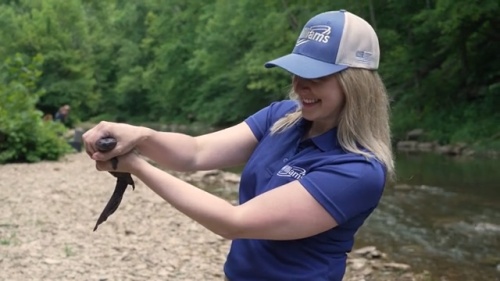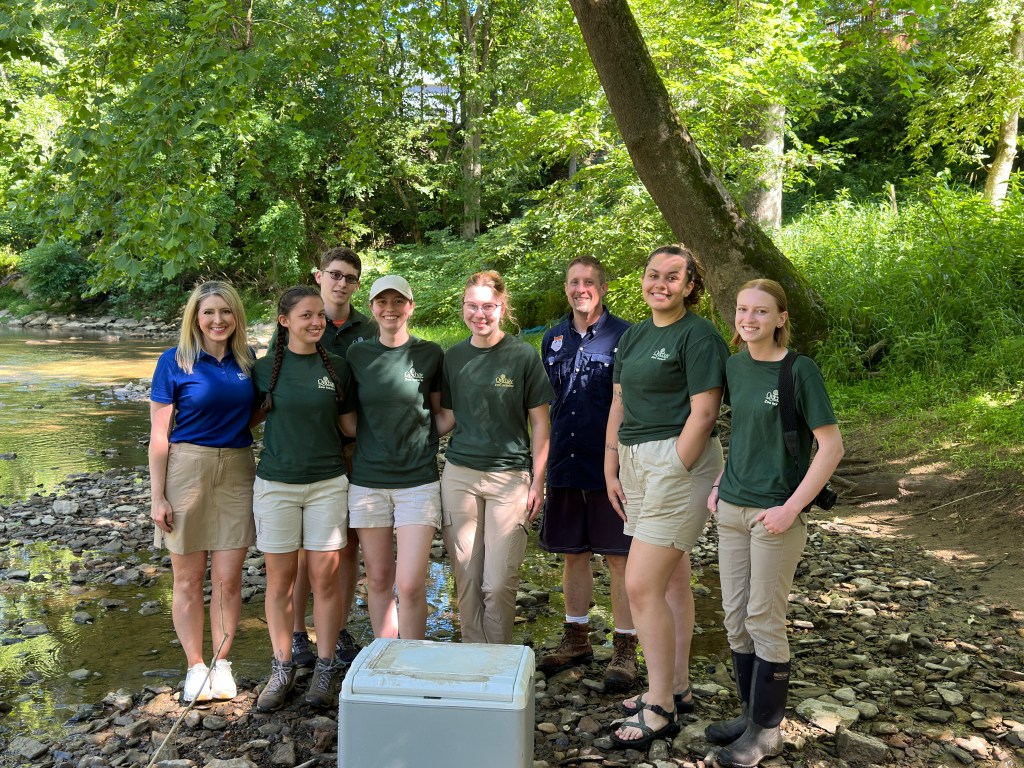
They are slimy, anti-social and not conventionally cuddly. But that didn’t stop employee Erika Baldauff from cradling a few Eastern hellbender salamanders before carefully placing them in West Virginia’s Buffalo Creek.
There, it’s hoped they’ll make homes under large boulders and repopulate a vulnerable species that the Oglebay Good Zoo, with Williams support, is working to save.
Hellbenders are the largest salamander in North America, growing up to 30 inches in length. But most people have never seen one because they live under rocks and depend on clean streams to absorb oxygen through their skin.
“They were slippery and squirmy, but I had a great time handling these amazing creatures that are vital to biodiversity here,” said Baldauff, a manager of technical services. “I am a resident of West Virgina and I’m proud to be part of a company that values conservation and preservation, helping to provide a brighter future for these animals.”
In all, more than 100 hellbenders recently were released into two streams where they were first collected as eggs as part of the zoo’s raise-and-release conservation program. These hellbenders have been growing up at the zoo since 2018 and were finally deemed large enough to fend off predators in the wild.
Hellbenders once thrived in streams and rivers throughout Appalachia, said zoo director Joe Greathouse, director of the zoo in Wheeling, W.V.
But since the 1970s, their populations have been in decline due to sedimentation of streams from deforestation, disease and historic misconceptions that led to unnecessary killing, despite the species being non-poisonous. Historically, hellbenders inhabited over 40 streams and rivers in West Virginia, and now, the species is only present in about a dozen streams or rivers, most of which occur within the federally protected lands.
“Through our program, we’ve definitely seen the hellbender population be maintained on Buffalo Creek and Wheeling Creek in West Virginia,” Greathouse said. “And that’s really important because they’re declining throughout the rest of the Ohio River Valley region. And the benefit of that is we’re putting individuals out, and we’re seeing those individuals survive from year to year, and hopefully contribute to the population.”
Greathouse said hellbenders are critically important to the ecosystem.
“They serve as primary predators of crayfish, but they’re also the canary in the coal mine, so they tell us how healthy some of our local streams and rivers are.”
The Oglebay Good Zoo made history in 2007 as the first zoo in the world to successfully hatch Eastern hellbender eggs in human care. This milestone continues to drive conservation efforts, ensuring the survival and resurgence of this unique species in its native habitat.
“The success of hellbender conservation requires a lot of partners, so we are very fortunate to have partnerships with Williams, academic institutions like West Liberty University, the West Virginia Division of Wildlife, and our other zoo and aquarium partner, The Wilds,” Greathouse said.
Williams also supports the zoo’s program to save the endangered red wolf, which is virtually extinct in the wild. Two pups were born last year and are thriving at the zoo.
